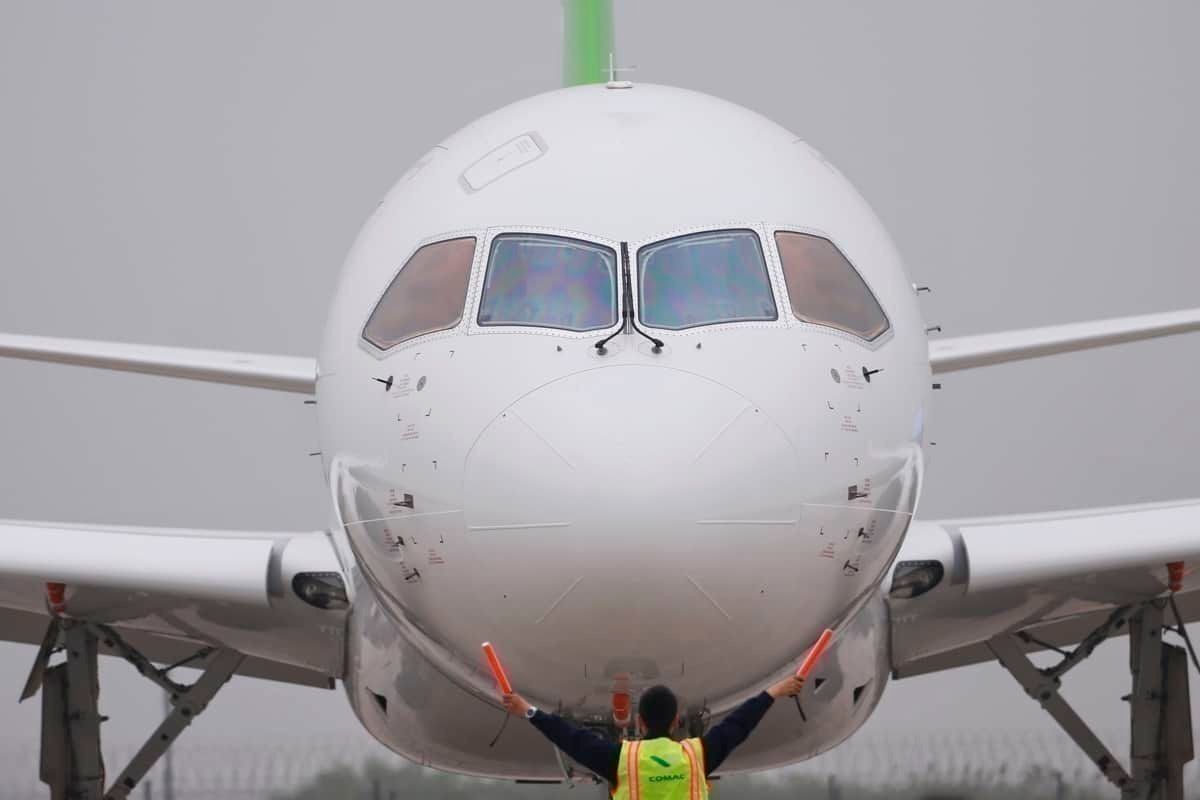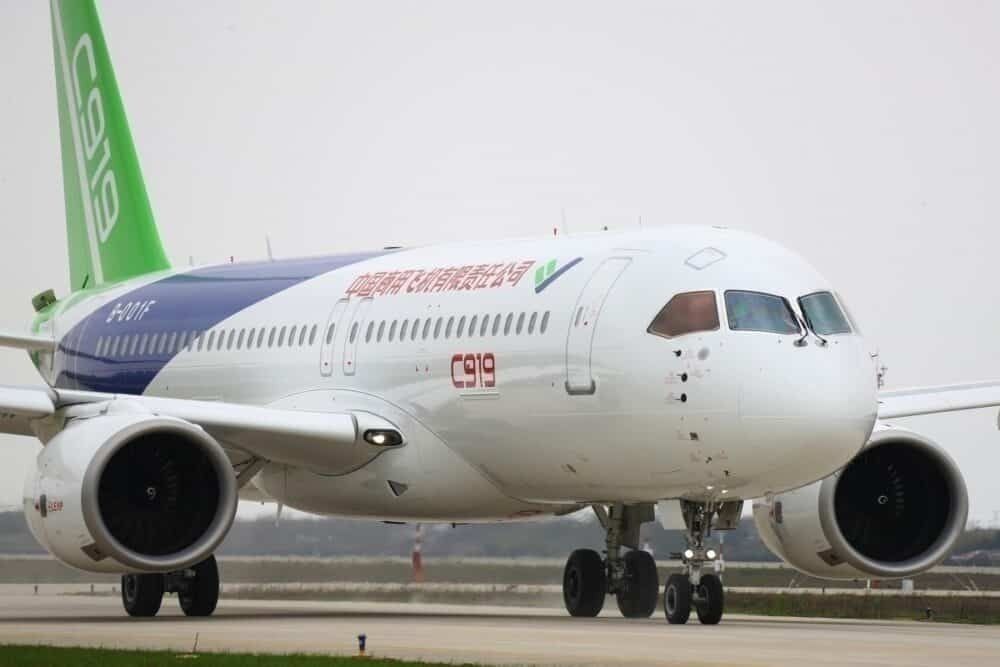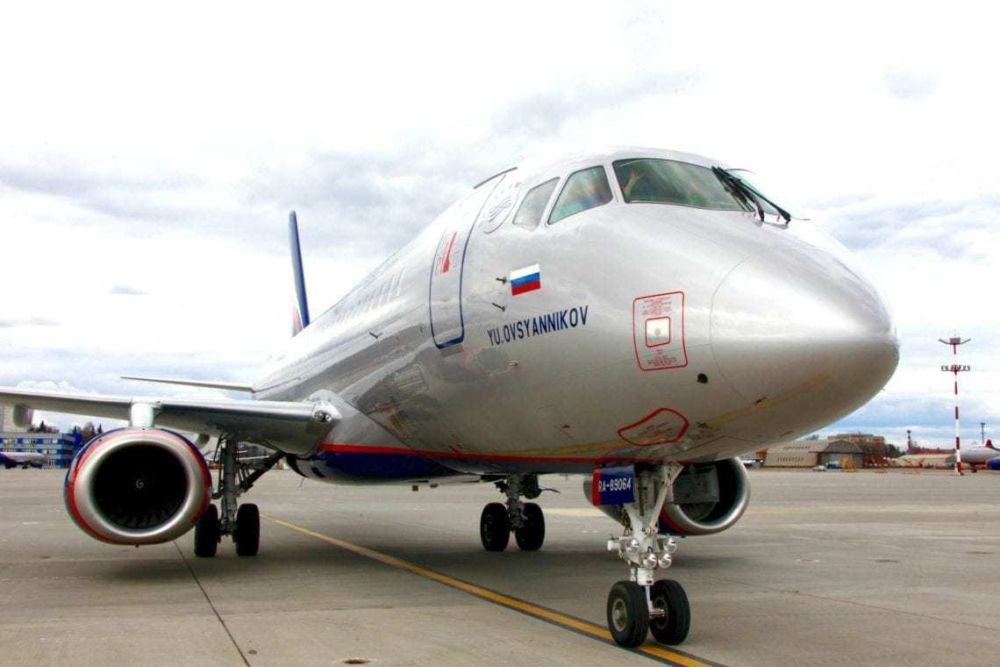Having finally made a public flying appearance, the COMAC C919 appears to be on the road to certification. With a substantial order book behind it and the might of Beijing pushing it forward, could it become the third player in the narrowbody market worldwide? Chairman of Air Lease Corporation, Steven Udvar-Hazy, doesn’t think so.
Will the C919 take off?
For several decades, there have only been two manufacturers in the large narrowbody segment. Airbus and Boeing have cornered the market for short-haul jets, with Embraer snapping at their heels with their range of regional jets. But in the last few years, all eyes have turned to China to see what they can bring to the narrowbody party.
The COMAC-produced C919 is widely considered to be the only real competitor to the A320 family and 737 line of aircraft. Despite multiple delays to the program, the aircraft made a splash this weekend with a public appearance and flight at the Nanchang Flight Convention.
Stay informed: Sign up for our daily aviation news digest.
Marking clear progress on the road to certification, the aircraft has already gained some traction in its home market. Overall, there are more than 1,000 orders placed for the type, although only 305 of those are firm commitments – the others are letters of intent or memorandums of understanding.
As might be expected, apart from a tentative 10 firm orders from leasing firm GE Capital, all the rest are from Chinese entities. What’s the hope for this aircraft in the Chinese market, and could it break out and become a narrowbody for the rest of the world?
Even in China, less than 10%
Speaking at a recent Aviation Week webinar, Chairman of leasing giant Air Lease Corporation Steven Udvar-Hazy commented on the future of the C919. His overall impression is that it will be a moderate success, but only on its home turf. He said,
“COMAC will take some market share among the Chinese airlines. Those airlines, the ones that have government ownership or partial government ownership, will be required to take a certain percentage of aircraft in the form of the 919, and to a lesser extent, the ARJ21.”
The COMAC produced ARJ21 has orders in for 221 units. Its launch customer was Chengdu Airlines, and in June this year, it landed with three of China’s biggest operators - Air China, China Eastern, and China Southern. Again, apart from one four-unit order for the Republic of Congo and a GECAS order, all the outstanding orders are from Chinese customers. With many of these airlines owned or part-owned by the government, the orders were likely somewhat politically motivated.
If the orders for the C919 are maintained, what percentage of Chinese airlines’ future single-aisle fleets will be this home-built model? Not very much, according to Udvar-Hazy, who thinks it’s unlikely they’ll secure a foothold of more than 10%. He said,
“It really depends a great deal on the production capability of the 919, how quickly they get the bugs out of the airplane once it's in operation … we'll have to watch if they can mount, any kind of a reasonable production.
“But let's assume they can build 30 to 50 airplanes a year. That is still a very small percentage of the total single aisle requirement in China, it is somewhere in the order of 10%. So while you’ll see COMAC gain some share on Chinese airlines, I do not see it set to dominate the narrowbody requirements. It will still be dominated by the Airbus A320 families and 737.”
What about the export market?
If Udvar-Hazy’s predictions are correct and the future Chinese narrowbody fleet has a 10% mix of COMAC’s aircraft, could we see a similar level of penetration into the global supply chain? The ALC boss thinks that’s unlikely. He said,
“The difficulty I see there's some clear comparisons to the Russian aerospace industry. It's one thing to build an aircraft and to certify it to western standards, but to support a fleet of these aircraft outside of a home state is a challenge that no one else has been able to conquer, other than Boeing, Airbus, Embraer and Bombardier.”
A lack of support has been the downfall of many an aircraft type, a notable example being the Sukhoi Superjet SSJ100. While the SSJ is a reasonable regional aircraft, the lack of supply chain, maintenance support, and spares availability has left it with little market penetration outside of Russia itself.
Unless COMAC can crack the nut of how to support these aircraft worldwide, it’s unlikely we’ll see a great deal of them anywhere outside China.



